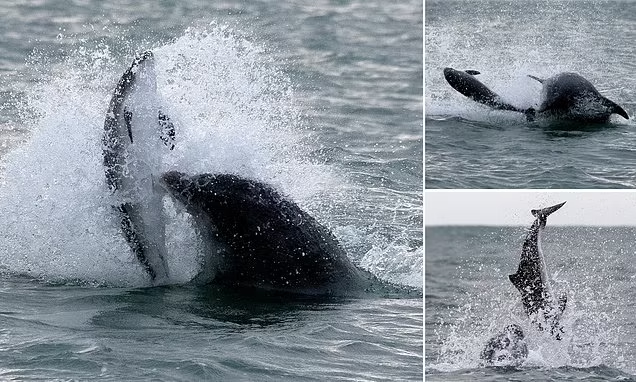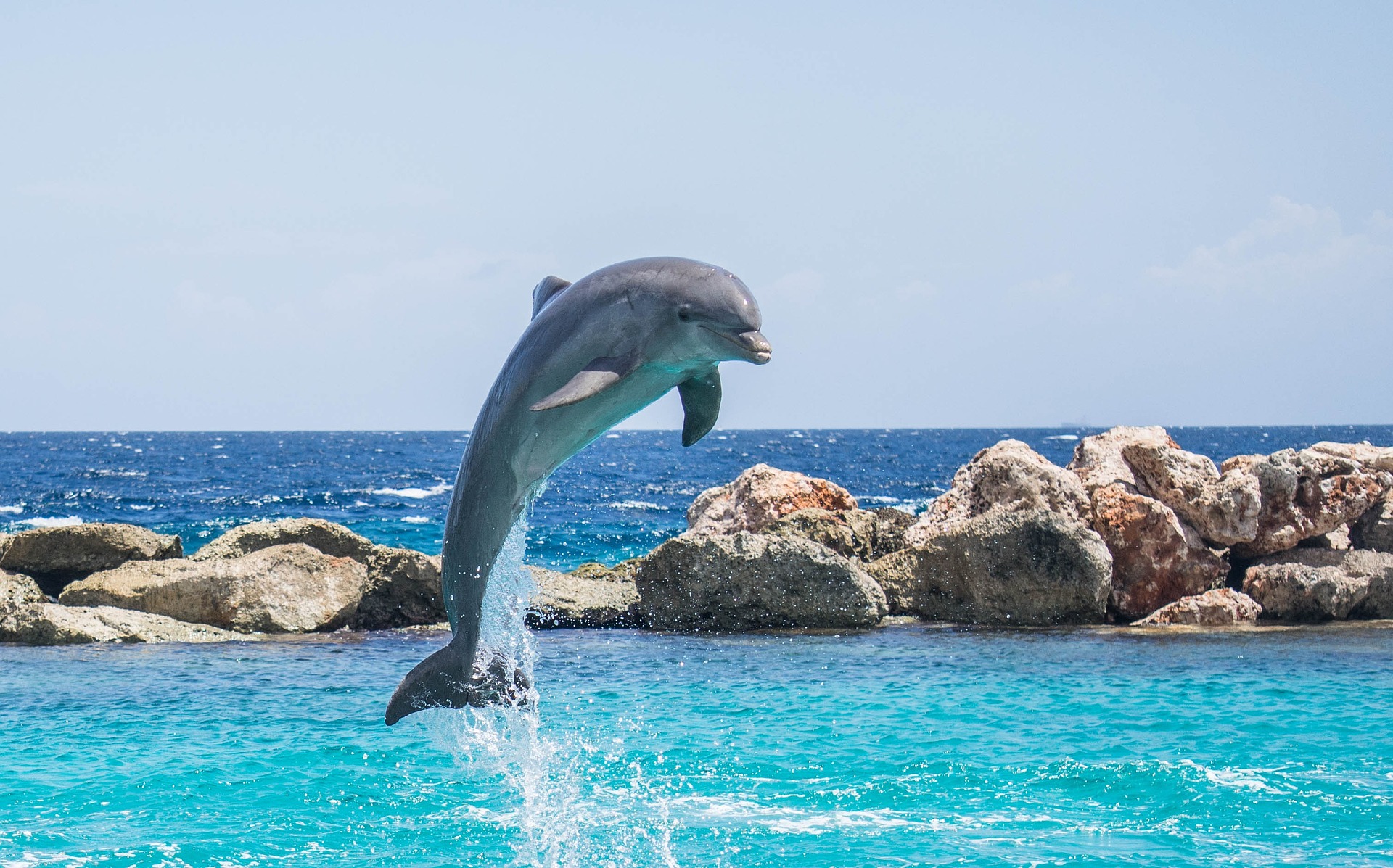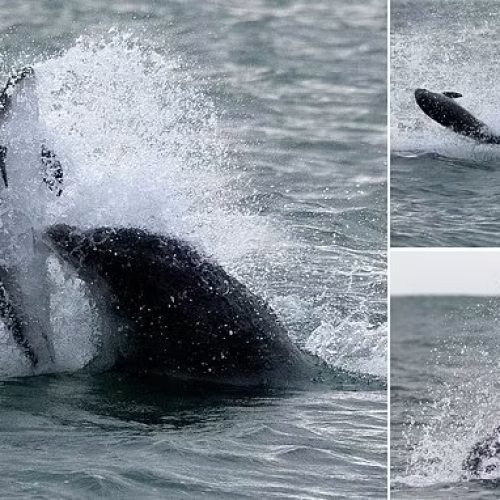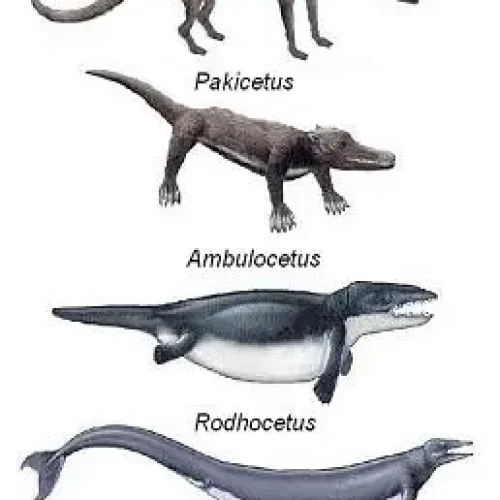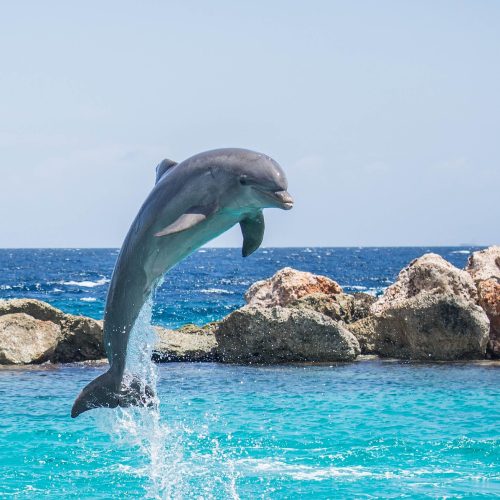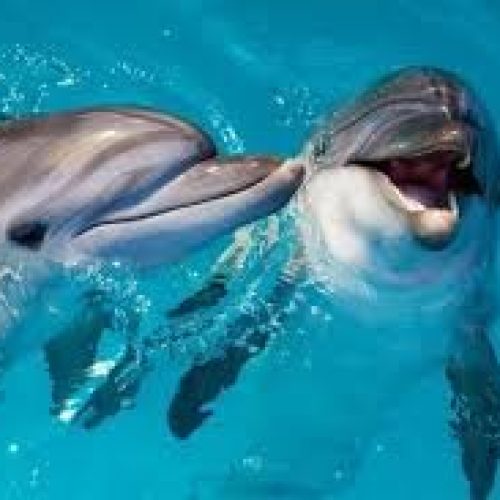In this article
THE CONTROVERSIAL HISTORY OF TAIJI’S DOLPHIN HUNTS
Nestled along Japan’s rugged coastline, the small fishing town of Taiji has become the epicentre of a global controversy.
For generations, local fishermen have engaged in dolphin drive hunts, a practice that has sparked intense debate and drawn international scrutiny.
Let’s dive into the complex history and cultural context of these hunts, exploring their origins, significance, and the global spotlight that has shone on Taiji in recent years.
Origins of the dolphin drive hunts
The roots of Taiji’s dolphin hunts stretch back centuries, intertwining with Japan’s long-standing maritime traditions.
Historical records suggest that organized dolphin hunting in the region began as early as the 17th century.
Initially, these hunts were driven by necessity, providing a vital source of protein for a coastal community with limited agricultural resources.
As hunting techniques evolved, Taiji’s fishermen developed a highly coordinated method known as “oikomi.” This involves herding dolphins into a secluded cove using a wall of sound created by striking metal poles in the water.
Once trapped, the animals are either captured for sale to aquariums or slaughtered for their meat.

Cultural significance in Taiji
For many in Taiji, the dolphin hunts represent more than just an economic activity – they’re a deeply ingrained part of local identity and heritage.
Supporters argue that the practice is a time-honoured tradition, linking current generations to their ancestors and the sea that has sustained them for centuries.
The hunts have also played a role in Taiji’s economy, with dolphin meat historically being a staple in local cuisine.
However, it’s worth noting that demand for dolphin meat has declined significantly in recent decades, both due to changing tastes and concerns about mercury contamination.
• Tradition vs. modern values: The clash between cultural preservation and animal welfare
• Economic impact: Shifting from hunting to dolphin-watching tourism
• Health concerns: The debate over mercury levels in dolphin meat
International spotlight and “The Cove” documentary
While Taiji’s dolphin hunts had drawn some criticism from animal rights groups in the past, it was the 2009 documentary “The Cove” that thrust the practice into the global spotlight.
The film, which won an Academy Award, used hidden cameras to capture graphic footage of the hunts, sparking widespread outrage and calls for their cessation.
The documentary’s impact was seismic. It galvanized international activism, leading to protests, diplomatic pressure, and boycotts.
Many aquariums worldwide pledged to stop acquiring dolphins captured in Taiji, dealing a significant blow to one aspect of the hunt’s economic model.
In response, Taiji and the Japanese government have defended the hunts as a legal, regulated practice deeply rooted in local culture.
They argue that Western critics fail to understand the context and importance of the tradition.
The ongoing debate surrounding Taiji’s dolphin hunts highlights the complex interplay between tradition, animal welfare, and cultural relativism.
As global awareness continues to grow, the town finds itself at a crossroads, grappling with pressure to end a centuries-old practice while seeking to preserve its identity and economic viability.
While the number of dolphins killed in Taiji has decreased in recent years, the hunts continue to this day, albeit under intense scrutiny and amid evolving public opinion both within Japan and internationally.
The future of this controversial practice remains uncertain, as Taiji navigates the choppy waters between tradition and a changing world.
CURRENT STATUS OF DOLPHIN HUNTING IN TAIJI
Recent shifts in hunting practices
Taiji’s dolphin drive hunts have undergone significant changes. While the practice hasn’t ceased entirely, there’s been a noticeable shift in focus.
Hunters now prioritize capturing dolphins for aquariums and marine parks rather than solely for meat consumption.
This pivot reflects both economic pressures and changing attitudes towards cetaceans.
• Capture methods have been modified to reduce stress and injury to the animals
• Live captures fetch higher prices, incentivizing a move away from mass slaughter
• Some species, like bottlenose dolphins, are now primarily targeted for captivity rather than consumption
Quotas and regulations: A balancing act
The Japanese government has implemented stricter quotas and regulations on dolphin hunting in response to international pressure.
These measures aim to balance conservation efforts with the preservation of local traditions.
Current regulations include:
• Annual catch limits set by species
• Restricted hunting seasons
• Mandatory training for hunters on humane killing methods
• Increased oversight and documentation of hunts
For the 2023-2024 season, the quota stands at 1,849 dolphins across nine species. This number, while still substantial, represents a decrease from previous years.
Global pressure vs. local traditions
The international spotlight on Taiji, amplified by documentaries like “The Cove,” has had a profound impact on the town and its practices.
• Tourism has declined, affecting the local economy
• Some residents feel their culture is under attack from outsiders
• Others, particularly younger generations, question the necessity of the hunts
Despite these pressures, many in Taiji maintain that dolphin hunting is an integral part of their heritage.
They argue that outsiders fail to understand the cultural significance and economic importance of the practice to their community.
The Japanese government has stood firm in defending Taiji’s right to continue the hunts, citing cultural preservation and food security.
However, they’ve also encouraged the development of alternative industries, such as whale and dolphin watching tours, to diversify the local economy.
The situation in Taiji remains complex and evolving. While the number of dolphins killed has decreased, the debate over the ethics and necessity of the hunts continues.
As global awareness grows and attitudes towards marine mammals shift, Taiji finds itself at a crossroads between tradition and change.
The coming years will likely see further adaptations as the town navigates these challenging waters.
THE ONGOING DEBATE: CULTURE VS. CONSERVATION
The Taiji dolphin hunts continue to spark intense debate, pitting cultural preservation against animal welfare and conservation efforts.
This contentious issue forces us to grapple with complex questions about tradition, ethics, and the future of coastal communities.
Defenders of the Taiji dolphin hunts often emphasize the deep-rooted cultural significance of the practice.
They argue that these hunts are an integral part of local identity, connecting present-day residents to their ancestors and maritime heritage. Some key points raised include:
• Historical continuity: The hunts represent a living link to Taiji’s past and Japan’s whaling tradition.
• Cultural autonomy: Supporters argue that outside criticism amounts to cultural imperialism, imposing Western values on a unique Japanese practice.
• Food sovereignty: While controversial, dolphin meat has been a part of the local diet for generations.
Masayuki Oka, a Taiji official, stated in an interview, “This is our culture, our tradition. We have the right to decide how we use marine resources, just as other cultures have their own practices.”
Environmental and ethical concerns
Critics of the dolphin hunts raise significant environmental and ethical objections to the practice. These concerns have gained traction both internationally and within Japan itself. Key arguments include:
• Animal welfare: The drive hunting method and slaughter techniques are considered inhumane by many experts.
• Conservation impact: There are worries about the long-term sustainability of targeting certain dolphin populations.
• Ecosystem effects: Removing top predators like dolphins could have unforeseen consequences for marine ecosystems.
Dr. Naomi Rose, a marine mammal scientist, explains, “These hunts not only cause immense suffering to intelligent, social animals but also risk disrupting the delicate balance of our oceans.”
Health concerns have also entered the debate.
Studies have shown high levels of mercury in dolphin meat, leading to decreased domestic consumption and raising questions about the hunts’ continued relevance.
Alternatives to dolphin hunting for Taiji’s economy
As pressure mounts to end the hunts, there’s growing interest in developing alternative economic opportunities for Taiji. Several potential avenues have been proposed:
1. Eco-tourism: Transforming Taiji into a dolphin-watching destination could provide sustainable income while celebrating the region’s marine life.
2. Sustainable fishing: Investing in more selective, environmentally friendly fishing methods could help maintain Taiji’s fishing tradition.
3. Cultural heritage tourism: Emphasizing Taiji’s rich maritime history and traditional crafts could attract visitors interested in Japanese coastal culture.
4. Marine research centre: Establishing Taiji as a hub for cetacean research and conservation could create jobs and position the town as a leader in marine science.
Yoshi Takahashi, a local business owner, shared his perspective: “We need to find a way to honour our past while securing a future for our children. Maybe it’s time to see dolphins as our partners rather than our prey.”
The path forward for Taiji remains unclear. Balancing deeply held cultural beliefs with evolving global ethics and environmental concerns presents a significant challenge.
As the debate continues, it’s crucial to foster dialogue between all stakeholders, seeking solutions that respect both cultural heritage and the need for conservation.

